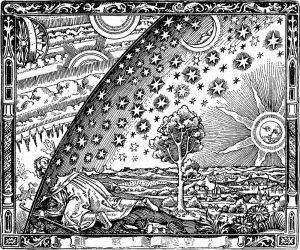
In my last post I had to get my snark on about character as an ideological flashpoint. But there’s a lot more to say about character as a key to good writing, and how one actually goes about forming a fictional character.
Now, I’ve read my share of writing advice, books and articles either by writers I admire or by writers I know little about. Following Lois Bujold on Goodreads recently led me to a blog post by Patricia Wrede, which keyed into something that I’ve long thought about writing character — and that is that character, like any other element of writing, is a gestalt function.
I think writers are too often tempted to talk about characters as if they have the same kind of agency functionally as they do in the plot — or at least as if they should. But I think they’re two different things. In the plot, yes, we want our characters to do things and not always have things being done to them; we want our characters to want things rather than take on the coloring of the situation around them all the time.
But functionally speaking, characters are affected by what surrounds them and who they interact with. As a color changes its perceived hue when framed by red and when framed by blue, any character’s personality is deeply affected by who they’re surrounded with. That’s the way it should be: after all, it’s how we are in real life. It’s one reason I’ve always been frustrated with personality tests. I could test myself out as an INFP, but throw me in a room with a bunch of other INFPs and ask us to choose a place to go out to dinner — and I’ll probably be one of the first people to go OH MY GOD JUST MAKE A DECISION. I tortured myself with the Enneagram one afternoon: “I’m not purely any of these types, and if I were, I wouldn’t interact with such-and-such type like that.”
As Wrede says, we want to discern the pattern, get it settled, and move on, whether testing for personality types or inventing fictional characters. But it’s never that simple and there is no order of operations for putting together a piece of fiction. Most of my stories start with a kernel of a scene, an incomplete interaction between two characters. Developing it involves asking myself questions: how do I justify this situation? Whose presence offstage is exerting influence on it? Who is that person and what would the situation be like if they were actually present? And as I ask more of these questions and begin to answer them, the kernel situation begins to change in its turn. I realize that no amount of world-manipulation will justify this or that aspect; or I decide that what I want out of the scene has mutated; or, inevitably, the character I invented for the purposes of the situation is not going to cooperate with my plans for them.
That’s always a gratifying moment. When a character begins to resist what I want to do to them and starts taking their cue from the situation I’ve developed them in, that’s when I know that I haven’t just constructed a lifeless figure. O mortal, prophesy to the breath. And then the breath prophesies back.
All the same, technical decisions do need to be made. A character of any significance in a story needs to have a trajectory of some kind. The situation isn’t staying the same; they shouldn’t either. After all, they’re going to be part of any reason the situation changes. A character is strong and unassailable: what kind of thing would make them not so? A character is inclined to hide: what would it take to force them out of avoidance mode? A character is a caretaker personality: what about this situation would complicate and mature their sense of compassion? Say all three of these characters are in the situation together: how would the situation change depending on which of them moves first? Do I like that, or would I like it better if another character is the one to move first?
I was talking with Erica about an edit she wanted to make to her current manuscript, and we noted that depending on where the new event falls in the existing series of events, it’s going to change certain scenes where particular characters interact; it would make those scenes about something else. Could be interesting, she remarked; but do I want to sacrifice the positive things in the scenes as they exist for that? For the time that these changes are contemplated, the story is a Schrodinger’s box, with all possible scenarios coexisting until the decision collapses them. Rather apropos for a time-travel story, but it works for other things too.
For me, that’s what it means to say that character is plot. In the gestalt that is a developing story, characters push and are pushed, they pull and are pulled. The “realer” they are, the more agile they will be in the situation, the more tensile. It’s not just that a character needs to act: it’s that they need to embody a justifiable response to the situation in which they find themselves. That’s an embodiment that transcends type, as we transcend the findings of a personality test.
From there, when it gets to the point of putting words on a page, it becomes a series of decisions about how to introduce, describe, and employ the perspective of the characters I’ve developed. Would this scene say the right thing about a character if it is written from their perspective, or should I use a different POV character to show what they’re doing/feeling? Do I want to play this trope to the hilt or push back on it? How much of the character’s inner thoughts should imbue the narrative of this scene?
And then there are the foundational scenes, scenes whose dialogue I’ve worked out almost from the beginning; when it comes time to actually write them down, it’s a perilous and exhilarating moment. Does it feel as right as it did in my head? We shall see.
And then there’s the fun of talking about one’s characters with beta readers. Post-structuralists be damned, it’s fun to discuss our characters as if they were real people. I’ll jump on any excuse. And I suppose that’s what I felt the need to add to my snarky blog of the other day. Characters, almost more than any other element of the art, make writing fun. And the more mimetic power you have and use, the funner it is.
And that, as Edith Ann says, is the truth.
